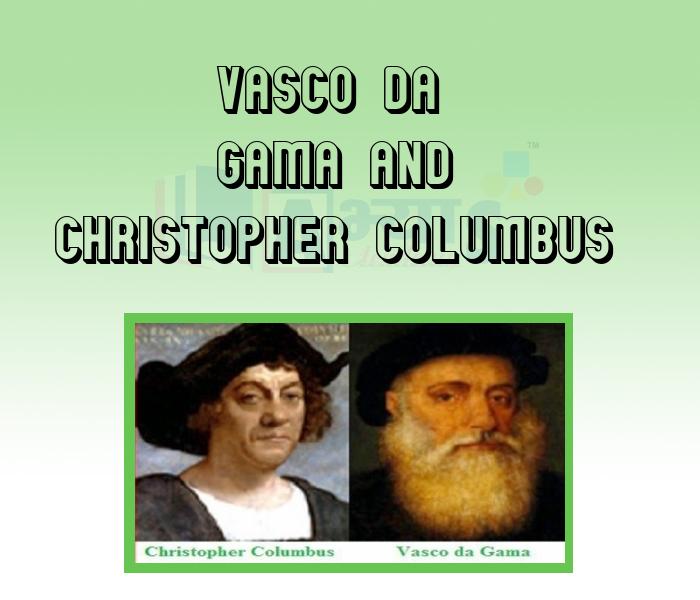Vasco Da Gama and Christopher Columbus












Vasco Da Gama and Christopher Columbus
Vasco Da Gama and Christopher Columbus: in the fifteenth century European sailors undertook unprecedented explorations of sea routes. They were driven by the desire to find ways of reaching the Indian subcontinent and obtaining spices.

Vasco da Gama, a Portuguese sailor, sailed down the African coast, went round the cape of good hope and crossed over to the Indian coast, went round the cape of good hope and crossed over to the Indian ocean. His first journey took more than a year; he reached Calicut in 1498, and returned to Lisbon, the capital of Portugal, the following year. He lost two of his four ships, and of the 170 men at the start of the journey, only 54 survived. In spites of the obvious hazards, the routes that are opened up proved to be extremely profitable- and he was followed by English, dutch and French sailors.
The search for sea routes to India had unexpected fallout. On the assumption that the earth was round, Christopher Columbus, an italialn, decided to sail westwards across the Atlantic Ocean to find a route to India. He landed in the West Indies (which got their name because of this confusion) in 1492. He was followed by sailors and conquerors from Spain and Portugal, who occupied large parts of central and south America, often destroying earlier settlements in the area.
In sailing to India five years after Columbus sailed to America, Vasco da Gama found what Columbus had sought in vain a new route to an old world. Columbus and da Gama might best be thought of as complementing each other. Between the two of them they united the continents.
Students / Parents Reviews [10]
My experience with Abhyas academy is very good. I did not think that my every subject coming here will be so strong. The main thing is that the online tests had made me learn here more things.

Hiya Gupta
8thMy experience was very good with Abhyas academy. I am studying here from 6th class and I am satisfied by its results in my life. I improved a lot here ahead of school syllabus.

Ayan Ghosh
8thOne of the best institutes to develope a child interest in studies.Provides SST and English knowledge also unlike other institutes. Teachers are co operative and friendly online tests andPPT develope practical knowledge also.

Aman Kumar Shrivastava
10thAbout Abhyas metholodology the teachers are very nice and hardworking toward students.The Centre Head Mrs Anu Sethi is also a brilliant teacher.Abhyas has taught me how to overcome problems and has always taken my doubts and suppoeted me.

Shreya Shrivastava
8thIt was a good experience with Abhyas Academy. I even faced problems in starting but slowly and steadily overcomed. Especially reasoning classes helped me a lot.

Cheshta
10thA marvelous experience with Abhyas. I am glad to share that my ward has achieved more than enough at the Ambala ABHYAS centre. Years have passed on and more and more he has gained. May the centre flourish and develop day by day by the grace of God.

Archit Segal
7thIt was good as the experience because as we had come here we had been improved in a such envirnment created here.Extra is taught which is beneficial for future.

Eshan Arora
8thAbhyas Methodology is very good. It is based on according to student and each child manages accordingly to its properly. Methodology has improved the abilities of students to shine them in future.

Manish Kumar
10thI have spent a wonderful time in Abhyas academy. It has made my reasoning more apt, English more stronger and Maths an interesting subject for me. It has given me a habbit of self studying

Yatharthi Sharma
10thAbhyas is a complete education Institute. Here extreme care is taken by teacher with the help of regular exam. Extra classes also conducted by the institute, if the student is weak.
